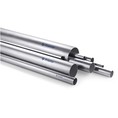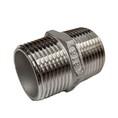1. *Shielded Metal Arc Welding (SMAW):* Also known as stick welding, SMAW is widely used in construction and pipeline projects. It involves the use of an electric arc to form a weld using a flux-covered electrode and a power source. The electrode melts during welding, creating a molten metal pool that solidifies to form a strong joint.
2. *Gas Metal Arc Welding (GMAW):* Commonly known as MIG (Metal Inert Gas) welding, GMAW uses a wire electrode that continuously feeds into the weld area. The wire electrode, along with an inert gas shielding, forms the weld. It offers high welding speeds and is suitable for both indoor and outdoor applications.
3. *Gas Tungsten Arc Welding (GTAW):* GTAW, also known as TIG (Tungsten Inert Gas) welding, is commonly used for high-quality welds in critical applications. It employs a non-consumable tungsten electrode and an inert gas shield to create the weld. GTAW produces clean, precise, and aesthetically pleasing welds.
4. *Flux-Cored Arc Welding (FCAW):* FCAW utilizes a tubular wire filled with flux to protect the molten weld pool from atmospheric contamination. It is a versatile welding technique suitable for outdoor and windy conditions. FCAW is often used in heavy fabrication and structural welding.
1. *External Threading:* In external threading, a pipe die is used to cut threads into the outer surface of the pipe. The pipe die is rotated around the pipe, creating the desired thread profile. Once threaded, the pipes can be screwed together using couplings or fittings.
2. *Internal Threading:* Internal threading involves creating threads on the inner surface of the pipe using a tap. The tap is rotated inside the pipe to cut the threads. Internal threading is commonly utilized when connecting pipes to valves or fittings.
1. *Compression Couplings:* Compression couplings are suitable for connecting pipes that carry gas or fluid under low pressure. These couplings consist of two segments that are tightened around the pipe ends using compression nuts. They create a leak-resistant connection without the need for welding or threading.
2. *Grooved Couplings:* Grooved couplings use a gasket and bolts to connect pipes together. The grooves on the pipe ends are matched with the grooves on the coupling, creating a secure joint. Grooved couplings are commonly used in fire protection systems and large-scale plumbing installations.
3. *Flanged Couplings:* Flanged couplings involve connecting pipes using flanges. Flanges are flat, circular discs with holes for bolts. The pipes are aligned and bolted together using gaskets, creating a sealed connection. Flanged couplings are commonly used in industrial applications that require frequent disassembly.




